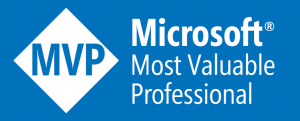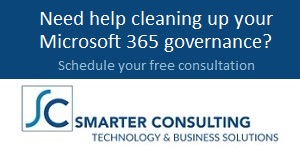Content Strategy: The Sales-Enablement Content System
In complex B2B sales, content isn’t a nice-to-have: it’s a deal accelerator. But too often, it’s created for marketing’s goals, not the buyer’s journey. Decks sit unused, one-pagers go stale, and sales teams improvise because they don’t have what they need when they need it.
 A well-built sales-enablement content system flips that dynamic. It’s not a folder of PDFs or a slide library. It’s a living system that equips your buying committee with the right proof, at the right time, tailored to their role in the deal. Done right, it shortens cycles, improves win rates, and scales seller effectiveness across teams.
A well-built sales-enablement content system flips that dynamic. It’s not a folder of PDFs or a slide library. It’s a living system that equips your buying committee with the right proof, at the right time, tailored to their role in the deal. Done right, it shortens cycles, improves win rates, and scales seller effectiveness across teams.
In this latest entry in my ongoing Content Strategy series, let’s break down how to build one, and, more importantly, why each piece matters to your business.
Start With the Buying Journey (Not Your Sales Process)
The first mistake companies make is organizing content around their funnel stages: MQL, SQL, demo, proposal, close. Buyers don’t care. They’re navigating their own internal process. It’s one that’s often messy, political, and nonlinear. Your content needs to meet that reality.
So instead of thinking in terms of what your team wants to say, think in terms of what buyers need to know and believe at each stage:
-
- When they’re identifying the problem, they need clarity and urgency.
- When they’re comparing solutions, they need to understand your approach.
- When they’re validating, they need proof and consensus.
- When they’re ready to buy, they need to eliminate perceived risk.
This shift in mindset is critical. If you map your content to these buyer-driven stages—problem, solution, validation, purchase—you help your sales team stay relevant at every step. And more importantly, you help your champion make the internal case to the rest of their committee.
Speak to Roles, Not Personas
Most B2B deals involve six to ten stakeholders, all with different goals, objections, and incentives. A one-size-fits-all pitch doesn’t cut it anymore. That’s why your content system needs role-based kits. These are purpose-built asset bundles that help sellers speak the language of each stakeholder.
For example, a CFO wants to understand ROI, payback period, and budget fit. A security officer is focused on compliance, risk exposure, and technical controls. End-users want to see what the product looks like in action, and whether it’ll make their job easier or harder.
Giving your team tailored content for each of these roles isn’t just helpful, it’s essential. Without it, your deal may get derailed by an unseen stakeholder who surfaces late in the cycle with tough questions no one was prepared to answer.
Role-based kits reduce friction, build confidence, and speed up the internal alignment buyers need to get to yes. That’s not just good content. It’s a good deal insurance.
Standardize to Scale and Stay On Message
In many companies, sales content evolves in a chaotic, decentralized way. Reps build their own decks. Old PDFs resurface months later. Pricing changes, but no one updates the one-pager. It’s a recipe for confusion—and liability.
The fix is standardization with version control. This doesn’t mean locking everything down in a content prison. It means creating clear, up-to-date, easy-to-find one-pagers and battlecards that everyone can trust.
One-pagers should convey key value props, features, and proof points—fast. Battlecards should arm reps to handle objections, position against competitors, and stay confident on calls.
Equally important: you need to track versions and show what’s been updated. Whether you’re using a CMS, a sales enablement tool like Highspot, or even a shared Notion page, make it easy for reps to know they’re using the latest approved content. That consistency builds trust with your sales team, and with your buyers.
Create Visibility With a “Last Updated” Dashboard
Even with great content, sales teams won’t use what they can’t find—or don’t trust to be current. That’s why you need a simple, visible “last updated” dashboard to keep everyone on the same page.
Think of this like a changelog for your sales content. It shows what’s new, what’s changed, and what’s coming soon. This might live in your internal wiki, your sales portal, or wherever reps already go to prep for meetings.
It sounds simple, but the business impact is real: it saves reps time, reduces risk of using outdated material, and makes your content team more responsive to what the field needs. It also signals that your enablement content is a living asset—not a static archive.
Connect Content to CRM and Track What Works
Creating content without feedback is like launching a product with no analytics. You need to know what’s working—and what isn’t. That’s why integrating your content system with your CRM (or enablement platform) is critical.
When you can track which assets are shared most, which are opened by prospects, and which appear most often in closed-won deals, you get a clear view into impact. This insight helps you double down on high-performing content and retire or improve underused assets.
Even better, you can start to tie content to specific deal outcomes: “Deals that included our ROI calculator closed 22% faster.” That kind of data doesn’t just justify your content investment, but improves your win strategy.
Turn Objections Into Monthly Updates
No matter how good your assets are, they will age, and buyers will keep asking new questions. The best sales teams don’t just react to objections; they turn them into fuel for stronger content.
That’s why a modern content system needs a monthly update cadence. Pull objection themes from call recordings, win/loss interviews, or direct sales feedback. Then use that data to:
-
- Add new FAQs to battlecards
- Create short rebuttal docs or slides
- Tweak messaging to preempt common pushback
This isn’t just about staying fresh—it’s about adapting in real time to the real conversations happening in your pipeline. You’re not guessing what content to make next; your buyers are telling you.
Enablement Is a System, Not a Set of Assets
It’s tempting to treat sales enablement as a project: build a deck, write a one-pager, move on. But that approach breaks down fast in competitive, complex deals. What you need instead is a sales-enablement content system: responsive, mapped to real buyer needs, and integrated with your sales workflow.
This system doesn’t just help sales close more. It helps marketing get closer to the customer. It helps product teams see what lands. It helps the whole company speak with one voice, tuned to the buyer’s reality.
And it’s not hard to start. Pick one product. Map content to buyer stages. Build role-based kits. Set a monthly update cadence. You’ll be amazed how quickly the field adopts it. Remember that good enablement doesn’t feel like overhead. It feels like confidence.




